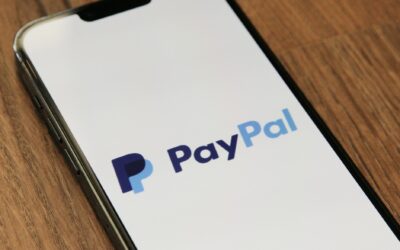In an era of increasing digital surveillance and geographical restrictions, CGI proxies have emerged as a popular tool for those seeking online anonymity and unrestricted access to content. These web-based proxies offer a unique approach to masking one's digital footprint, allowing users to bypass censorship and access region-locked websites with relative ease. As we explore the intricacies of CGI proxies in 2025, it becomes evident that their role in preserving internet freedom and privacy has evolved substantially. However, the question remains: are CGI proxies still a viable solution for modern internet users, or have they been outpaced by more advanced technologies?
Understanding CGI Proxies
CGI proxies serve as intermediary web-based tools that allow users to access websites indirectly. These proxies function by retrieving web content on behalf of the user, effectively masking their IP address and location.
CGI, which stands for Common Gateway Interface, refers to the protocol that enables the proxy server to communicate with web servers.
When a user accesses a CGI proxy, they enter the desired URL into the proxy's interface. The proxy then fetches the requested content, processes it, and delivers it to the user's browser.
This process can help bypass geographical restrictions, enhance privacy, and circumvent censorship. However, it is crucial to observe that CGI proxies may have limitations regarding speed and compatibility with certain web technologies.
Users should also be aware that while CGI proxies can provide a layer of anonymity, they may not offer the same level of security as other proxy types or VPNs.
How CGI Proxies Work
The mechanics behind CGI proxies involve a series of steps that facilitate anonymous web browsing. When a user enters a URL, the CGI proxy server receives the request, fetches the content from the target website, and returns it to the user's browser. This process effectively masks the user's IP address and location from the destination server.
Key aspects of CGI proxy functionality include:
- URL rewriting to maintain anonymity
- Content modification to remove identifying information
- Cookie management to prevent tracking
- Script handling to guarantee proper functionality
- SSL/TLS support for secure connections
CGI proxies can be accessed through web-based interfaces, eliminating the need for software installation. They often provide additional features such as ad-blocking and malware protection.
However, CGI proxies may slow down browsing speeds due to the intermediary processing required. Users should be aware that while CGI proxies offer anonymity, they may not provide complete security against all forms of tracking or surveillance.
Benefits of Using CGI Proxies
Utilizing CGI proxies offers several advantages for users seeking enhanced online privacy and access to restricted content. These web-based intermediaries allow users to browse anonymously by masking their IP addresses and encrypting their traffic.
This anonymity can protect against tracking by websites, ISPs, and potential cybercriminals. CGI proxies also enable users to bypass geographical restrictions, granting access to region-locked content or websites blocked in certain countries.
Additionally, they can serve as a temporary solution for circumventing firewalls in schools or workplaces. Some CGI proxies offer features like ad-blocking and malware filtering, enhancing the browsing experience and security.
For users with limited resources, CGI proxies provide a convenient alternative to VPNs, as they require no software installation and can be accessed from any device with a web browser. However, users should be aware of potential limitations in speed and security compared to other privacy tools.
Drawbacks and Limitations
Despite their advantages, what are the potential downsides of relying on CGI proxies? While CGI proxies offer benefits like enhanced privacy and bypassing geo-restrictions, they come with several limitations that users should consider.
- Slower connection speeds due to additional processing
- Limited support for complex web applications and scripts
- Potential security vulnerabilities if not properly configured
- Reduced functionality on certain websites
- Inconsistent performance across different proxy servers
CGI proxies may struggle with handling encrypted HTTPS traffic, potentially exposing sensitive data. Additionally, some websites actively block known CGI proxy servers, limiting their effectiveness.
Users should be aware that CGI proxies typically don't offer the same level of anonymity as VPNs or more advanced proxy types. Moreover, free CGI proxies often inject ads or collect user data, compromising privacy.
It's essential to weigh these drawbacks against the intended use case before relying on CGI proxies for online activities.
CGI Vs Other Proxy Types
Understanding the differences between CGI proxies and other proxy types is vital for users seeking the most appropriate solution for their needs.
CGI proxies, unlike traditional proxy servers, operate through web-based scripts and do not require software installation. This makes them easily accessible but potentially slower than dedicated proxy servers.
HTTP proxies, in contrast, act as intermediaries for web traffic, offering faster speeds but less anonymity.
SOCKS proxies provide a more versatile option, supporting various protocols beyond HTTP, but may be more complex to set up.
VPNs offer extensive encryption and privacy features, encompassing all internet traffic, but often come at a higher cost.
Each proxy type has its strengths and weaknesses, with CGI proxies excelling in accessibility and simplicity. Users must consider factors such as speed, security, and ease of use when choosing between these options.
Setting Up a CGI Proxy
Setting up a CGI proxy requires meticulous planning and execution. The process involves selecting a suitable web server, configuring the server to handle CGI scripts, and implementing the proxy software.
Administrators must guarantee proper security measures are in place to protect both the proxy server and its users. Regularly updating and maintaining the proxy is vital for peak performance and security.
Key steps in setting up a CGI proxy include:
- Choosing a reliable web hosting provider
- Installing and configuring a web server (e.g., Apache or Nginx)
- Enabling CGI support on the server
- Uploading and configuring the CGI proxy script
- Implementing security measures, such as access controls and encryption
Once the CGI proxy is operational, it's important to monitor its performance, address any issues promptly, and stay informed about potential vulnerabilities.
Proper documentation and user guidelines should be provided to guarantee efficient and responsible use of the proxy service.
Best Practices for Security
For CGI proxies, implementing robust security measures is paramount to protect both the server and its users. Key practices include regularly updating and patching the proxy software to address vulnerabilities.
Implement strong authentication mechanisms, such as two-factor authentication, to prevent unauthorized access. Encrypt all data transmitted through the proxy using protocols like SSL/TLS to safeguard sensitive information.
Configure firewalls and access controls to limit incoming connections and restrict access to essential services only. Regularly monitor logs for suspicious activities and set up intrusion detection systems to identify potential threats.
Implement rate limiting to prevent abuse and DDoS attacks. Educate users about safe browsing practices and potential risks associated with CGI proxies.
Conduct periodic security audits and penetration testing to identify and address weaknesses in the system. By following these best practices, administrators can substantially enhance the security of their CGI proxy deployments.
Future of CGI Proxies
The future of CGI proxies is poised for significant evolution as web technologies and security challenges continue to advance. As internet censorship and surveillance increase globally, CGI proxies are likely to play a vital role in maintaining online privacy and freedom.
Developers are focusing on enhancing CGI proxy capabilities to address emerging threats and user needs.
Key developments expected in CGI proxy technology include:
- Integration of advanced encryption protocols
- Improved anonymization techniques
- Enhanced compatibility with mobile devices
- Increased server distribution for better performance
- Implementation of AI-driven security features
These advancements aim to provide users with more robust, secure, and efficient proxy services. However, as CGI proxies evolve, so too will the methods used to detect and block them.
This ongoing cat-and-mouse game between proxy developers and censorship entities will drive continuous innovation in the field, shaping the future landscape of online privacy and access.
Additional Insights and Data
CGI proxies serve as valuable tools for enhancing online privacy, bypassing geographical restrictions, and circumventing censorship. While they offer advantages such as easy accessibility and SSL/TLS support, users must consider limitations like reduced speed and potential security risks. As internet privacy concerns grow, CGI proxies are likely to evolve, incorporating advanced security features and improved performance. However, users should remain vigilant, employing best practices and considering alternative proxy types for more robust protection. The future of CGI proxies will depend on their ability to adapt to changing online landscapes and user needs.















































